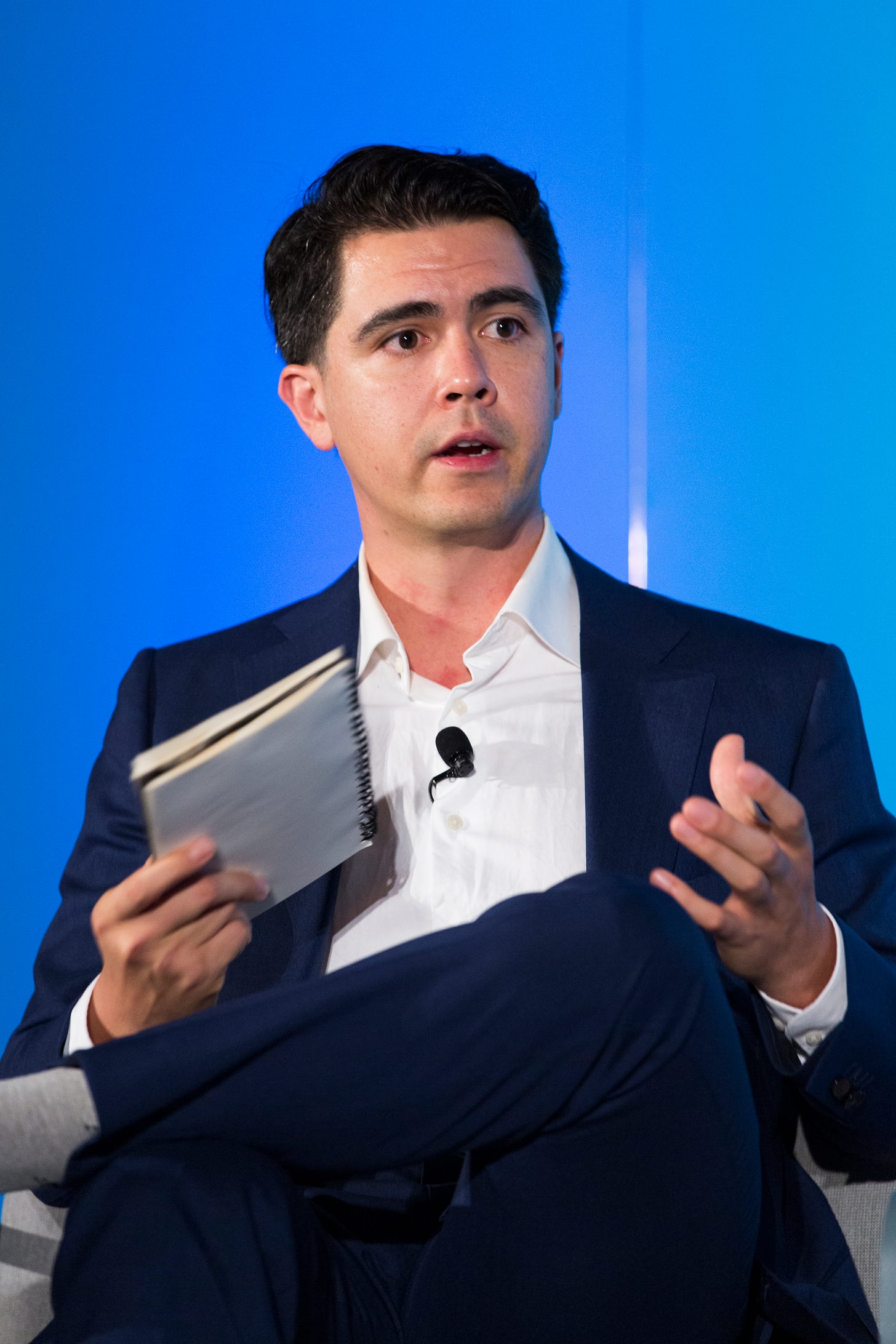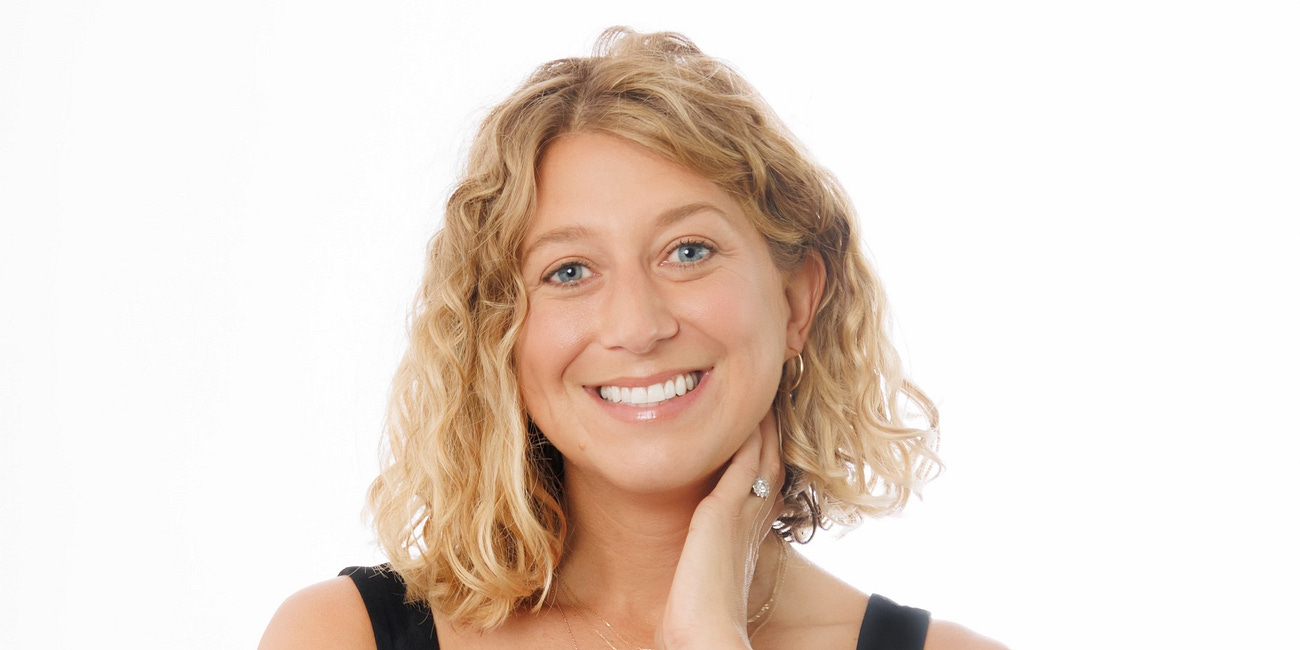The TPF Q&A: Ted Brown, Codeword
All your burning questions about the world of brand editorial answered.

Ted Brown knows how to reach across the aisle. He moves seamlessly from writing about Zyn for The New York Times and the algorithms that rule our life for The Atlantic to overseeing content initiatives for Google. His CV looks a whole lot like the Three Point Four Media extended universe: Longtime freelance writer who works in the constantly shifting world of creative services. That, and he replies to emails in a timely manner.
We talked to Brown, who was recently promoted to Head of Editorial at Codeword, about the journalist-to-marketer pipeline, the difference between a bad sentence and a sentence you don’t like, and how he made his way from the New York City Department of Transportation to brand editorial.
Three Point Four Media: Congrats on the new gig. What does Head of Editorial mean in 2025?
Ted Brown: We have a team of about 25 or 30 pure writers. Codeword is great in that a lot of folks used to be tech journalists. We have a bunch of writers with deep technical expertise but also a curiosity about how to tell a story the best way.
I oversee all of the written output for the studio. Anything high profile that goes out the door—whether it's website copy, a white paper, or an earned media campaign—I look at to make sure it’s laddering up to what our clients need.
We get asked often about how to make the transition from pure editorial to the brand and commercial side of things. What kind of people are you looking for during the hiring process, and what kind of people do you think succeed in that transition?
I'll give you an example. One person we just hired was a really talented movie critic at The Guardian and other outlets. They had been thinking about how to convert over and do more of this stuff. During the hiring process, I wanted to know if this person could write.
We've both been doing this long enough where you understand that 90 percent of the world can't string a sentence together very well. And then the 10 percent that can have different aptitudes for how well or fast they can do the type of writing we need at Codeword. I try to index in that five percent of writers who can turn their distinct style reviewing movies into something that's more commercially serviceable. And they need to be able to write quickly, and learn the process quickly.
So are you looking strictly for editorial people, or writers with more traditional marketing chops?
There are some people who come out of college wanting to be marketers—and they have specific impulses and reactions and instincts. I’d much rather hire the journalist-to-marketer pipeline because I don't think journalists have the same instinctually commercial impulses that a lot of pure marketing people do. They can tell better stories because there's a curiosity.
It’s fine if a client comes back with a line that you don't like. That is different from them coming back with a line that is bad. You have to learn the difference between those things very, very quickly.
Have you seen people struggle with that transition? Have you had to help new employees through the client review process? Tell them, don’t get married to this sentence.
Clients are not editors, so you're going to have a whole different rubric of how work is judged. People who are okay with making those adjustments to their writing do well. People who maintain that “well, I'm a writer” and are precious about what they're writing, don’t. Some writers don’t understand that, no, this isn't about the sentence being bad; it's about it not meeting the needs from the marketing team in this giant corporate mechanism.
You can tell who's able to buy into that a little easier and who purely wants to write. And god bless those people—I would love to just write, but you have to make those adjustments.
Part of the reason we’ve had success with our clients stems from being career freelancers and seeing edits or feedback and realizing, “Yes, it’s good. Ship it.” We’re not precious about things, we just want it to be good and clear.
My favorite editor I've ever worked with is Nikita Stewart at the Times real estate section. Nikita understands so intimately the difference between something she doesn't like and something that's bad—and that is such a vital thing for people to learn, understand, and internalize.
It’s fine if a client comes back and wants to add a line that you don't like. That is different from them coming back with a line that is bad. You have to learn the difference between those things very, very quickly.
LinkedIn is great. It’s the only good social media platform.
Do you find that you have to switch gears when you’re doing client work?
I did it backwards, basically. I started on brand stuff.
In terms of that skillset, I was working with brand teams a lot earlier than I was doing serious journalism. Most of my habits as a journalist were actually cultivated by being brand side and having to present and be comfortable talking to people.
How did you go from city planning to editorial?
I always wanted to write, but I did not think it was a viable financial decision. I didn’t see that as a future. It was never a path forward for me.
City planning was a more stable career. So I started writing on the side for city planning blogs, like Next City.
I worked there! When I got laid off from The Daily I went freelance and a friend forwarded me an email that they were hiring an economic development columnist. I applied for it and straight up told them, “I don't know anything about this stuff, but I'm a good reporter, I find this interesting, and I have experience working for all these national publications.” And they hired me.
I did not know that. That was my first byline anywhere.
And that’s how you broke in?
Kind of. I was a city planner in New York until 2013. I was at the New York City Department of Transportation in a special projects division working on bike mobility. I won a research fellowship in Berlin, so I quit my job at DOT and had a research stipend. I had been trying to write some and got introduced to an editor at Vice. That was my first major byline. I got paid zero dollars.
That checks out. At least they couldn’t be months late with your payment.
From there, I started picking up more clips. I wrote my first Times piece in 2018, which was a disaster. It was a miserable experience. I thought I had a pretty easy 800-word piece about a jazz group downtown. My editor told me, “we can’t run this.” I was like, “okay, my career’s over.”
Was this around the time you started doing consulting work and brand editorial?
I consulted doing marketing work for mobility tech brands. Then I started doing narrative writing and consulting on a few projects for Spotify and Squarespace. I was cold emailing people. Me and LinkedIn became very good friends those couple years.
You were early to the LinkedIn game.
LinkedIn is great. It’s the only good social media platform.
So now you’re sitting here as Head of Editorial at Codeword. How has the landscape and the idea of brand editorial changed?
We both remember the good old days of Mel Magazine. Back then, brand editorial was consumer brands wanting to be aspirational, so they made glossy magazines and hired people to write for them. That died, and it got really tough to do that kind of work. We’re starting to see green shoots of it come back. There is a renewed interest in doing more narrative catalog work or brand editorial work.
We’ve been doing a lot more brand story or brand messaging. Oftentimes that leads to web copy and other work. But we have moved past pitching people on strictly brand editorial and more so we can help you tell your story, which takes on all sorts of shapes.
That’s the stuff I’m more interested in now. How can we do this from the beginning with you?
The TPF Q&A: Casey Lewis, After School
Everything I know about Gen Z, I learned from Casey Lewis. She writes the exceptional After School newsletter, a daily compendium of all the things the kids are doing as well as a weekend edition for deep thoughts.



